Items
Site
The Medicine Chest
keywords is exactly
failure
-
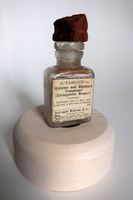
Livingstone
A small wooden chip from the same object collection as the medicine chest balanced on top of one of the bottles from the chest. "The treatment, the Livingstone rouser, was formulated by Dr Livingstone, who, after an attack of malaria in 1853, patented this mixture of quinine and purgatives (calomel, rhubarb and jalop) mixed with opium (Barrett & Giordani 2017: 1655–1666). The chip balanced on its lid is said to be from the almond tree under which he proposed to Mary Moffat in 1844. The juxtaposition of these two objects, one representing the quantifiable and the other the poetic, draws the viewer to consider the conflation of these two realms" (Liebenberg 2021: 273). -

Tabloid medicine chest from Scott Polar Expedition
The expedition carried with them a Tabloid Medicine Chest. On the 11th of March, knowing that the party was unlikely to survive, Scott ordered Edward Wilson, the expedition’s Chief Scientist and a qualified doctor, to divide the painkillers between them so they could each end their life on their own terms. Writing in his diary on that day, Scott states, “I practically ordered Wilson to hand over the means of ending our troubles to us, so that anyone of us may know how to do so". Scott, Bowers and Oates had thirty opium tabloids apiece and Wilson, the morphine. Scotts diary entry on either the 22nd or 23rd of March showed that they had a change of heart however: “no fuel and only one or two left of food — must be near the end. Have decided that it shall be natural — we shall march for the depot with or without our effects and die in our tracks". -

The Heterotopic Hearts
“On two occasions in 1977, when a patient’s left ventricle failed acutely after routine open-heart surgery and when no human donor organ was available, Barnard transplanted an animal heart heterotopically. On the first occasion, a baboon heart was transplanted, but this failed to support the circulation sufficiently, the patient dying some six hours after transplantation. In the second patient, a chimpanzee heart successfully maintained life until irreversible rejection occurred four days later, the recipient’s native heart having failed to recover during this period. Further attempts at xenotransplantation were abandoned and even now, more than 30 years later, xenotransplantation remains an elusive holy grail despite decades of research.” Extract: Brink JG, Hassoulas J. The first human heart transplant and further advances in cardiac transplantation at Groote Schuur Hospital and the University of Cape Town. Cardiovasc J Afr. 2009; 20(1):31-5 -

The hut
Captain Scott writes in his den in the Terra Nova hut in this October 7, 1911. -

“I am just going outside and may be some time"
After initially making good progress, Terra Nova expedition party’s prospects steadily worsened as they struggled northward. Deteriorating weather, frostbite, snow blindness, hunger and exhaustion led to Edgar Evans dying on 17 February and Lawrence Oates, whose condition was aggravated by an old war-wound to the extent that he was barely able to walk, voluntarily leaving his tent on 16 March and walking to his death. (“I am just going outside and may be some time".)" (Liebenberg 2011: 75). -
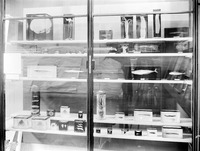
Terra Nova
Robert Falcon Scott’s Terra Nova expedition reached the South Pole on 17 January 1912 — 23 days too late. Inside a small tent supported by a single bamboo flying a Norwegian flag, was a record of the five who had been the first to reach the pole: Roald Amundsen, the leader, and his team - Olav Olavson Bjaaland, Hilmer Hanssen, Sverre H. Hassel and Oscar Wisting. On 19 January, they began their 1,300 kilometre journey home, Scott writing: “I’m afraid the return journey is going to be dreadfully tiring and monotonous” (Scott 1914: 548). -

Diving the Tacoma Narrows Bridge
"All that debris still remains under the bridge for the most part, and it has become a dive site. It is a very difficult dive site to get to because of the swiftly moving water and the very short period of slack time. Nature in this area has just a tremendous ability to take over. You have a man-made structure like the Tacoma Narrow Bridge that collapsed into the water. Very quickly, the ocean took it over and made it part of the habitat". Extract from the voiceover of trailer for 700 Feet Down (a documentary about the Tacoma Narrows Bridge told through witnesses of the bridge’s 1940 demise as well as intrepid divers exploring a reef of wreckage, ultimately reflecting on how history influences the present) -

A letter to Barrie
My dear Barrie, We are pegging out in a very comfortless spot. Hoping this letter may be found and sent to you, I write a word of farewell.... More practically I want you to help my widow and my boy – your godson. (...) I am not at all afraid of the end, but sad to miss many a humble pleasure which I had planned for the future on our long marches. I may not have proved a great explorer, but we have done the greatest march ever made and come very near to great success. Goodbye, my dear friend. Yours ever, R. Scott. (Excerpt from letter penned by Scott to Barrie on 29 March 1912) -

Vatnajökull (the sound of)
A live phone line was created to an Icelandic glacier, via an underwater microphone submerged in Jökulsárlón lagoon, an outlet of Vatnajökull. The number 07757001122 could be called from any telephone in the world, and the listener would hear the sound of the glacier melting. -

Chip of wood from an almond tree
Said to be a chip from the tree under which David Livingstone is said to have proposed to Mary Moffat 1884. Wood chip was donated by R.F. Immelman who purchased it from Kimberley museum. -
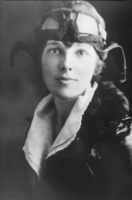
Earhart's pilot license #6017 photo
-
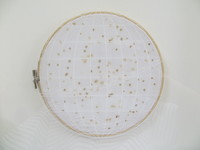
Amelia
"We are on the line 157 337. We will repeat this message. We will repeat this on 6210 kilocycles. Wait." On July 2, 1937 Model 10 Electra 1055 piloted by Amelia Earhart with navigator Fred Noonan took off from Lae Airfield, New Guinea and was never seen again. Earhart's last radio message was estimated to be within 200 miles of her destination Howland Island. Burn holes made with a magnifying glass on a handkerchief which corresponds to the positioning of the stars as observed from the place, date and time Amelia Earhart sent her last broadcast. -
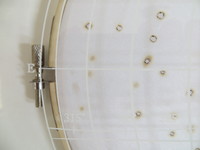
Amelia (detail)
"We are on the line 157 337. We will repeat this message. We will repeat this on 6210 kilocycles. Wait." On July 2, 1937 Model 10 Electra 1055 piloted by Amelia Earhart with navigator Fred Noonan took off from Lae Airfield, New Guinea and was never seen again. Earhart's last radio message was estimated to be within 200 miles of her destination Howland Island. Burn holes made with a magnifying glass on a handkerchief which corresponds to the positioning of the stars as observed from the place, date and time Amelia Earhart sent her last broadcast. -
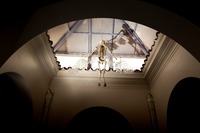
Icarus
Perspex wings with histology slides. Histology slides are prepared by taking a sample of biological tissue and fixing it to preserve the tissue in as natural a state as possible and prevent postmortem decay. The tissue is immersed in a chemical fixative and then embedded in wax to make it hard enough to cut into very thin sections of tissue (usually 5 to 7 micrometers in thickness). It is then passed through baths of solvents which remove the wax, then through graded alcohols, water and finally through baths of haematoxylin and eosin to stain it for better viewing under a microscope. -

The Swamp of Sadness
-

The Green Ray (Jay Gatsby)
“Gatsby believed in the green light, The orgiastic future that year by year recedes before us. It eludes us then, but that’s no matter – to-morrow we will run faster, stretch out our arms further... And one fine morning – So we beat on, boats against the current, borne back ceaselessly into the past” (Fitzgerald 1983: 188). -

Big Good Strong Hands...
The 1984 film, 'The Neverending Story', features Pyornkrachzark, the Rockbiter, a large creature made of stone. The Rockbiter species are named due to their diet of rocks and earth-based materials. The Rockbiter seen in the film particularly has a liking for limestone. In the novel and the first film, the Rockbiter appears early among the messengers sent to see the Childlike Empress at the Ivory Tower during the Nothing crisis. In the first film he ultimately reappears, encountered by Atreyu. He has lost faith in himself after failing to save his travelling companions from the Nothing, and advises Atreyu to flee.


